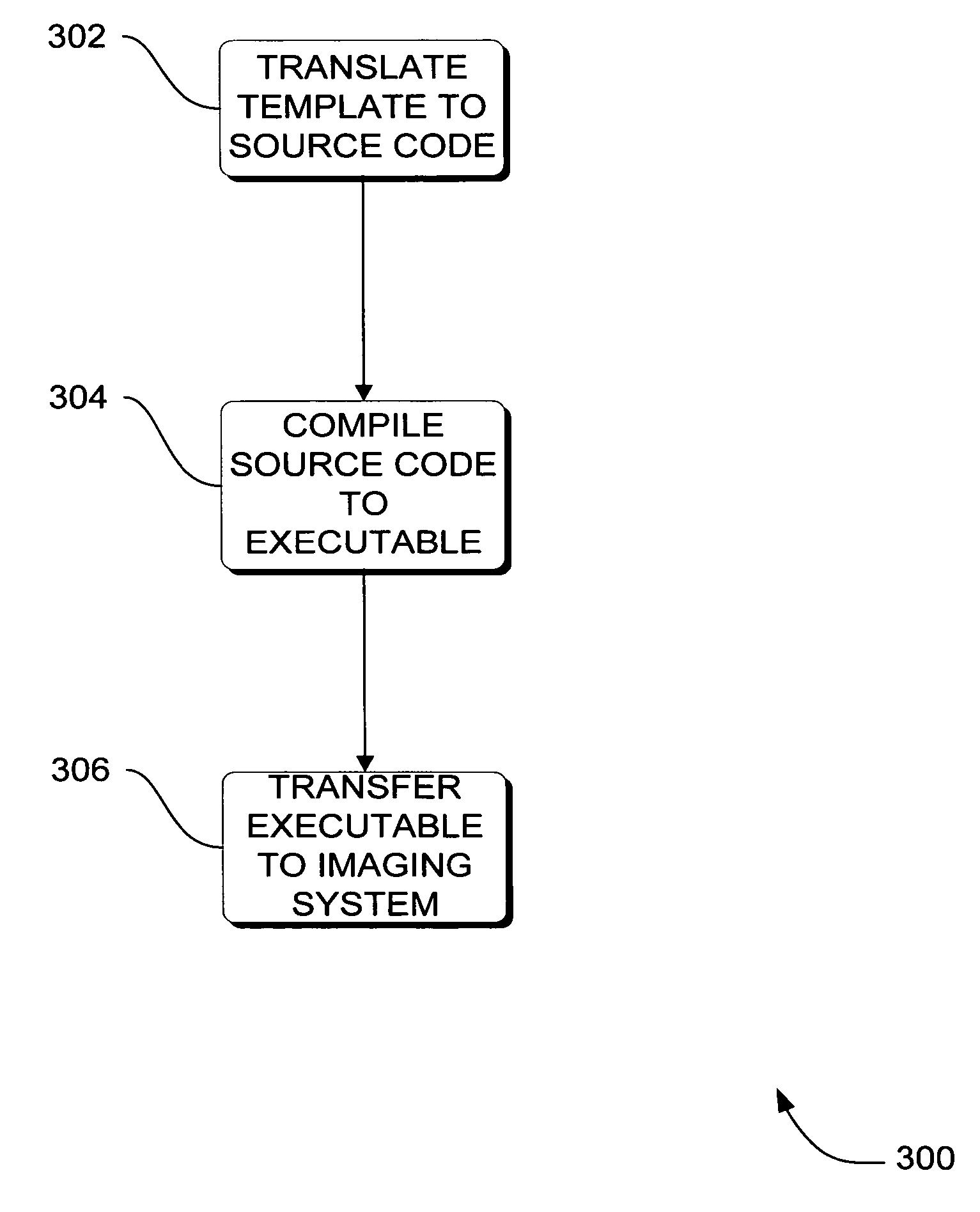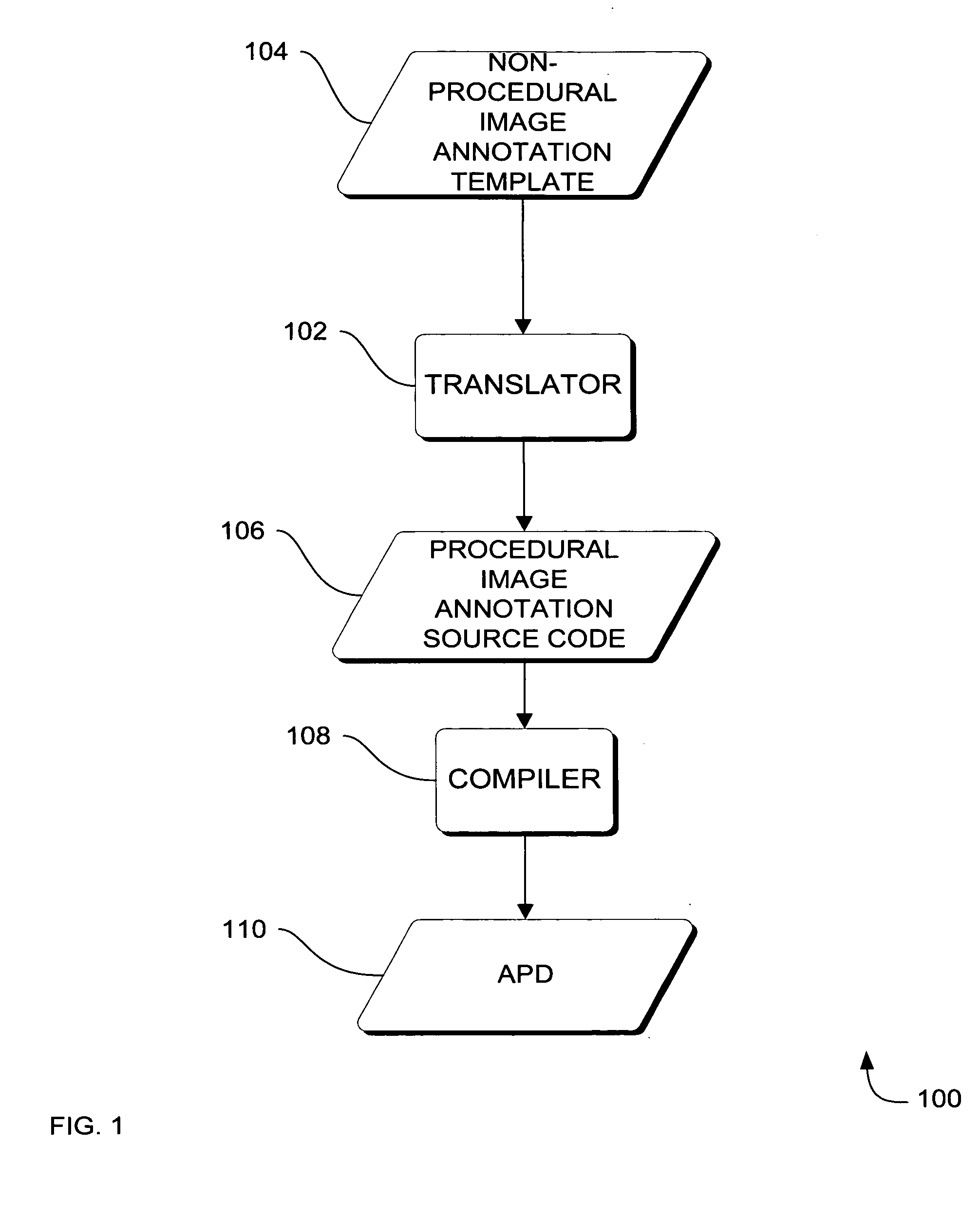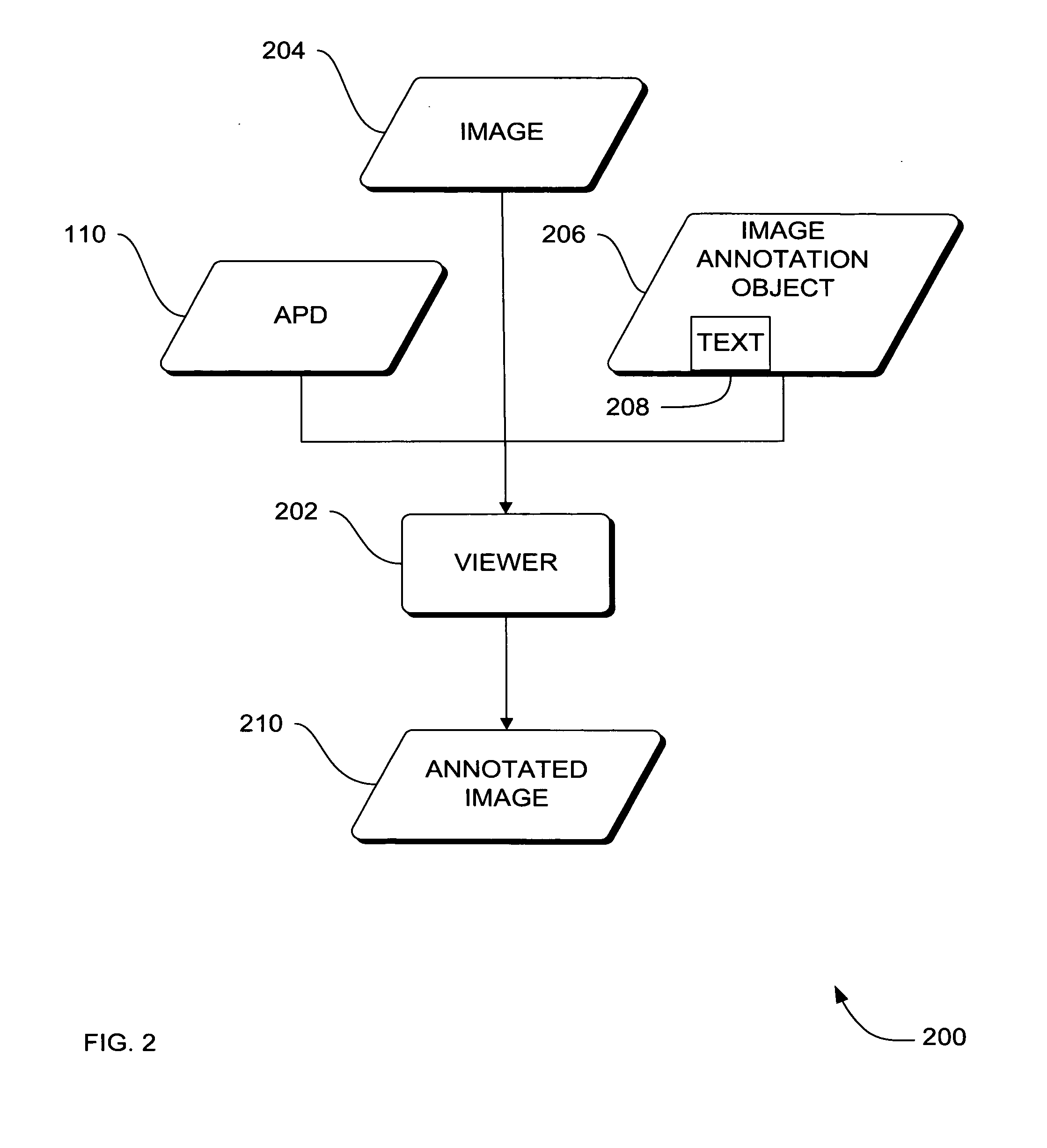Systems, methods and apparatus for image annotation
an image annotation and system technology, applied in the field of annotation images, can solve the problems of increasing the annual cost of modifying the viewers, logistical challenges, and the inability of medical imaging devices to include new annotation calculations and operations, and the inability to accurately predict the effect of the annotation
- Summary
- Abstract
- Description
- Claims
- Application Information
AI Technical Summary
Benefits of technology
Problems solved by technology
Method used
Image
Examples
an embodiment
Methods of an Embodiment
[0045] In the previous section, system level overviews of the operation of embodiments were described. In this section, particular methods performed by the computers of such an embodiment are described by reference to a series of flowcharts. Describing the methods by reference to a flowchart enables one skilled in the art to develop such programs, firmware, or hardware, including such instructions to carry out the methods on a processor of the of suitable computers executing the instructions from computer-readable media. Methods 300-400 are performed by a program executing on, or performed by firmware or hardware that is a part of, a computer, such as computer 1202 in FIG. 12.
[0046]FIG. 3 is a flowchart of a method 300 performed by a computer according to an embodiment. Method 300 generates an image annotation executable, such as an annotation presentation description (APD) 110, from a non-procedural image annotation template 104 to annotate an image 204.
[0...
PUM
 Login to View More
Login to View More Abstract
Description
Claims
Application Information
 Login to View More
Login to View More - R&D
- Intellectual Property
- Life Sciences
- Materials
- Tech Scout
- Unparalleled Data Quality
- Higher Quality Content
- 60% Fewer Hallucinations
Browse by: Latest US Patents, China's latest patents, Technical Efficacy Thesaurus, Application Domain, Technology Topic, Popular Technical Reports.
© 2025 PatSnap. All rights reserved.Legal|Privacy policy|Modern Slavery Act Transparency Statement|Sitemap|About US| Contact US: help@patsnap.com



